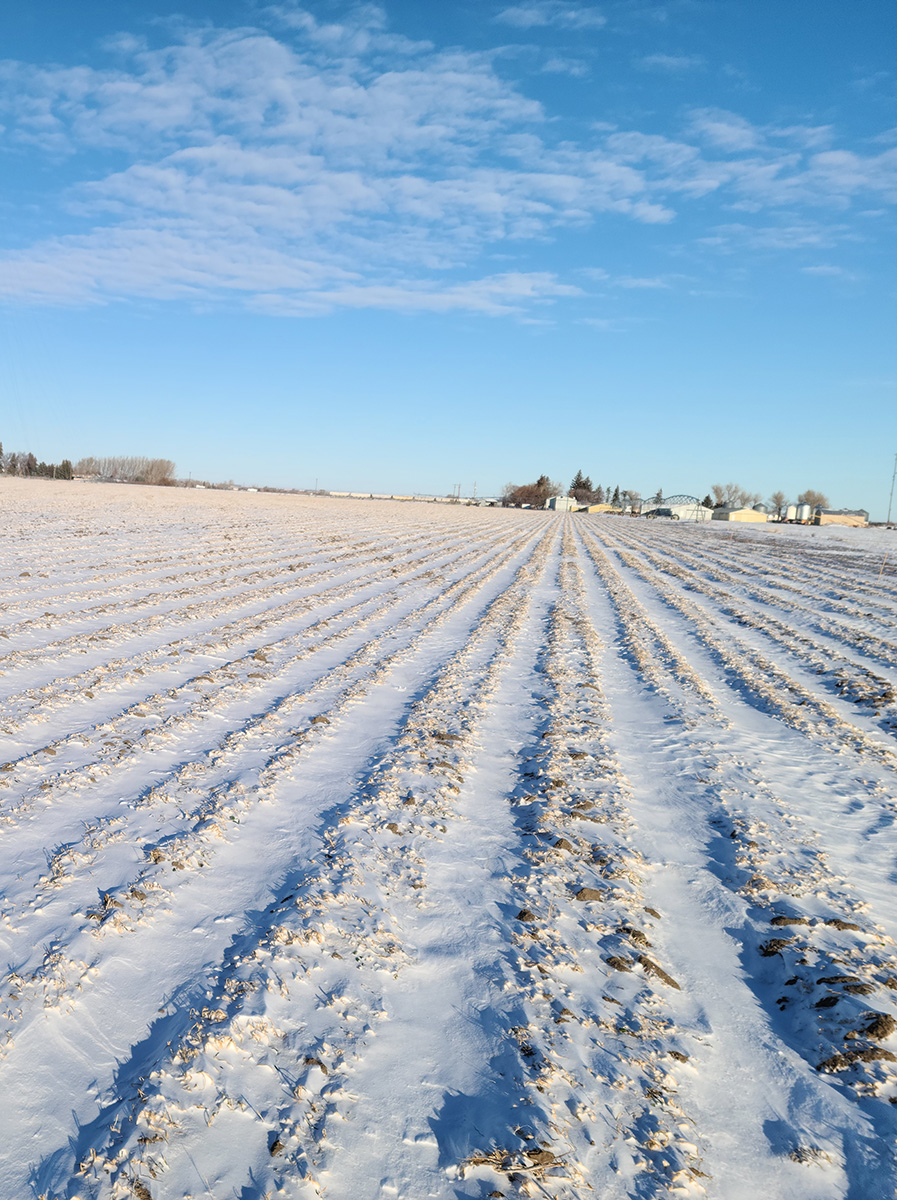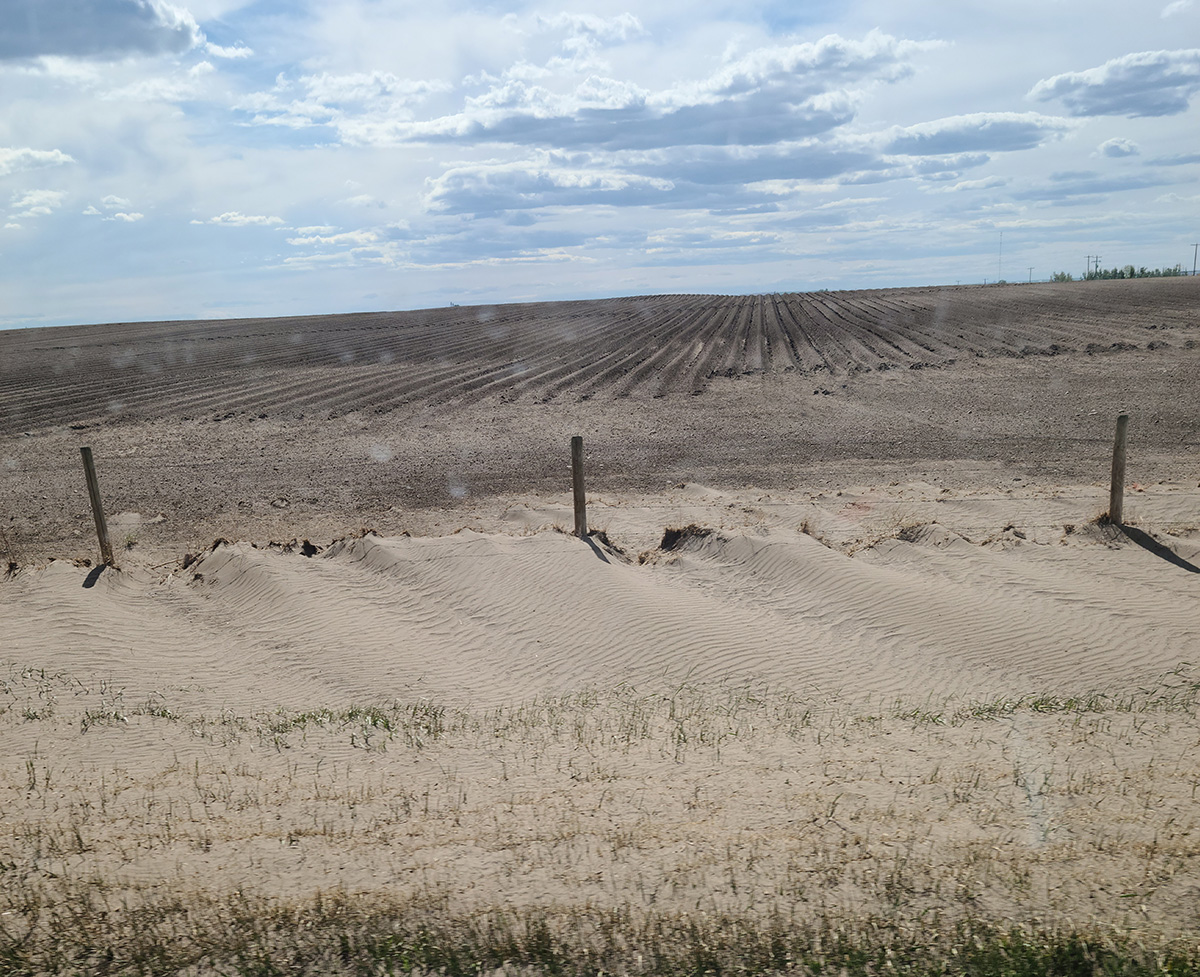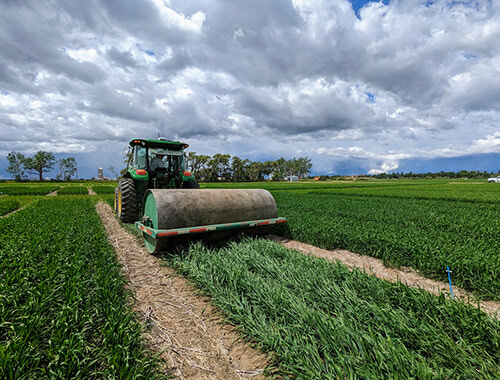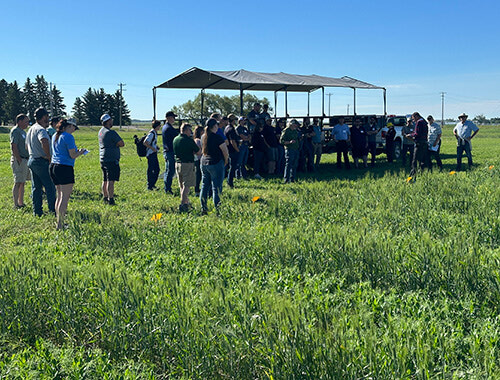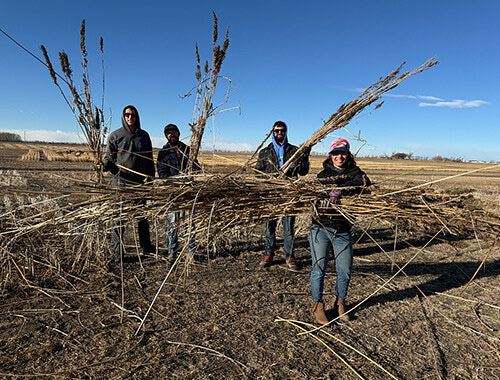by Tim Parent
in the Farming Smarter Magazine Fall 2023
One of the biggest challenges potato farmers currently grapple with is soil erosion.
Potatoes thrive in soft, fluffy soil. Whether tilling the earth in the spring to get that soil consistency or harvesting potatoes in the fall, the disturbed soil is at risk from wind erosion.
Farming Smarter Field Tested Manager Lewis Baarda says in regions prone to wind events, like southern Alberta, that's an issue.
“We get those 100 and 120-kilometre chinook winds here, and anything not anchored to the ground moves. Whether it's a trampoline in the neighbour's yard or light, fluffy soil prepped for potatoes, it's going to take off. We don’t have a whole lot of topsoil, so we have to protect what we have.”
|
|
|
Snow captured by the nurse crop planted in fall 2022. |
Harnessing Cover Crops
Baarda’s cover crop research looks for a way to mitigate soil erosion in potato production.
Cover crops emerged as a possible solution to combatting soil erosion, and they do exactly as the name implies: they cover the soil, protecting and enriching it.
Potato production has two key windows of time where the soil is susceptible to wind – before planting and after harvest.
Baarda stresses that fall field preparation for spring potato planting often takes place too late in the season to establish any cover crop. Baarda says any successful option would have to be a crop that can grow quickly in autumn before the cold weather stops growth.
“There’s not a lot of runway left in the season. Potato harvest finishes late September and into October when light/heat to establish crops is in rapid decline. We really need research to find a viable option.”
He adds that leaving the fall tilling until early spring would at least allow you to leave stubble over the winter. When it comes to post potato harvest there can be a longer window to establish a cover crop particularly if you follow potatoes with a winter crop such as winter wheat, durum or peas.
One piece of the puzzle
There is no quick fix when it comes to combatting soil erosion. Cover crops are one piece of the puzzle, but Baarda says farmers should look at all options that may help mitigate soil erosion. That includes crop rotation, tillage methods, tillage timing, and weather conditions in both the spring and the fall, which greatly influence the success or failure of each technique.
“There are lots of pieces to it and lots of different approaches. There’s no standard when it comes to combatting soil erosion. Farmers have to figure out the best fit based on their personal situation. If cover crops are the way to go, we want to give them as much information as we can to help them make the right decisions for themselves.”
The fight against soil erosion in potato production is ongoing. Other potential measures could include spreading manure or algae on the field to protect it. The topic needs more time and study to find a viable solution. Researchers are doing everything possible to safeguard the soil, not only to help secure the future of potato farming but to contribute to the preservation of this vital resource for generations to come.
Access more stories of research from the field in the Fall 2023 edition of Farming Smarter Magazine when our 2024 edition releases this October! Agronomy Smarts subscribers have access to all digital content without the wait.
|
|
|
Potato erosion on fall row marking potatoes |

